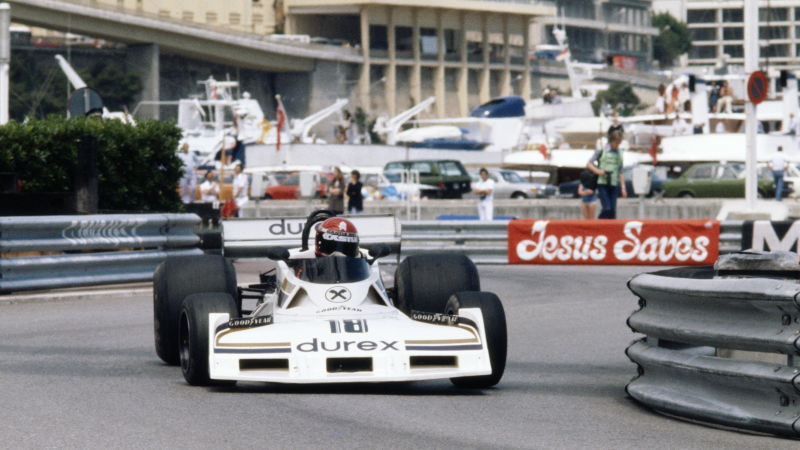
The 1976 Formula One season is famous for James Hunt and Niki Lauda’s rivalry, which played out across 16 races and ended, dramatically, at the Japanese Grand Prix, with Hunt taking home the championship. British viewers saw almost none of it, though, all because John Surtees’s team’s car was sponsored by a condom manufacturer and the BBC, well, couldn’t abide.
I came across this fact while researching a different story about F1 in the ‘70s; it turns out that Formula One in the ‘70s is an endless well of ridiculous stories. What’s funny about this one is that while a British driver was storming to the top of the standings in what is probably the sport’s most dramatic season ever, actual Brits at home couldn’t watch, because their government was too prude about condoms. The condom manufacturer in question was the London Rubber Company, which made the Durex brand condoms and offered to sponsor John Surtees’ fledgling F1 team for 1976.
He told the BBC in 2016 that the team tried to be tasteful enough in its livery for the car, but that wasn’t good enough.
Here’s the BBC:
The tipping point came at the non-championship Race of Champions at Brands Hatch in March, which the BBC was due to televise with Murray Walker commentating.
In his autobiography, Walker recalled: “As far as the BBC was concerned a visible Durex logo was totally unacceptable for family viewing.
“I arrived at Brands Hatch to be greeted by producer Ricky Tilling with the words: ‘Hi Murray, we’ll know by 11am whether we’re going to be on air or not.’
“’What are you talking about, Ricky?’
The next year, Hesketh’s car was sponsored by Penthouse, the noted pornographic magazine. Rizla, which makes rolling papers, was another sponsor.
“’Durex. We’re not going to transmit the race unless [team owner John Surtees] agree to take it off their cars.’”
They did not, so the BBC packed up their cameras and left.
This lasted for the entire F1 season until the BBC could no longer ignore the Hunt-Lauda rivalry, which was attracting huge crowds and front-page headlines. Finally, for the last race of the season, the Japanese Grand Prix, the BBC relented, allowing the British public to see a British driver win Formula One for the first time since Jackie Stewart. (There’s no word on how many viewers were persuaded to practice safe sex.)
Advertisement
The irony of all this, of course, is that cigarette sponsorship dominated F1 basically from the get-go, after teams first started putting sponsors on their cars in the late 1968. Why was cigarette sponsorship so popular and dominant? Because it was a way for tobacco companies to get around TV advertising bans in countries that had them—why would you need a a cigarette advertisement when you could buy an hour-and-half advertisement in the form of a cool-looking car on a Formula One track? The practice was eventually phased out in the aughts, as cigarette advertising bans became more widespread.
But in the ‘70s things were different. Here’s that Hesketh with the Penthouse and Rizla livery that features a Penthouse model on the front:
Advertisement
The BBC seemed to have less of a problem with that, showing highlights throughout the 1977 Formula One season. Lauda won the Drivers’ Championship that season, not Hunt, though British viewers could finally take it in in full.













